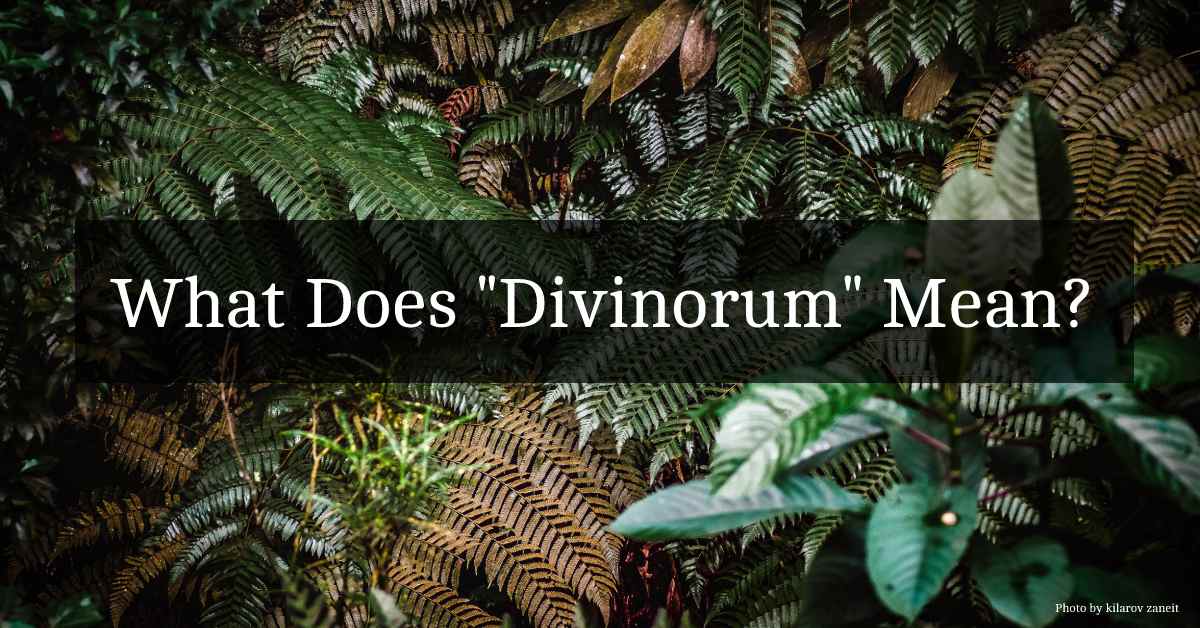Divinorum is a Latin word that means “of the divine” or “related to the divine.” It is often associated with the plant Salvia divinorum, which is a member of the mint family and native to the Sierra Mazateca region of Mexico.
Salvia divinorum has been used for centuries by indigenous people for medicinal and spiritual purposes. The plant contains a potent psychoactive compound called salvinorin A, which is responsible for its mind-altering effects.
When consumed, salvinorin A induces an intense but short-lived psychedelic experience, which can include vivid visual and auditory hallucinations, altered perception of time and space, and a sense of profound connection to the divine or spiritual realm.
The effects of Salvia divinorum are often described as otherworldly or mystical, which has led to its widespread use in shamanic rituals and spiritual practices. Many people believe that the plant has the ability to facilitate deep spiritual experiences and provide insight into the nature of reality and the universe.
How do you pronounce salvia divinorum?
The pronunciation of Salvia divinorum is [sal-vee-uh dahy-vuh-nawr-uhm].
Here is a breakdown of the pronunciation:
- Salvia: [sal-vee-uh]
- Divinorum: [dahy-vuh-nawr-uhm]
The emphasis is on the second syllable of both words: “vee” in Salvia and “vuh” in Divinorum.
What is the history of salvia divinorum?
Salvia divinorum has a long history of traditional use in the Sierra Mazateca region of Oaxaca, Mexico, where it is considered a sacred plant. The Mazatec people have been using Salvia divinorum in shamanic and spiritual practices for centuries, primarily for divination and healing purposes.
Western awareness of Salvia divinorum began in the 1930s, when an anthropologist named Jean Basset Johnson observed Mazatec rituals involving the plant. However, it wasn’t until the 1980s that the plant gained significant attention outside of indigenous communities. In 1982, a group of researchers led by Albert Hofmann, the Swiss chemist who discovered LSD, isolated and identified the psychoactive compound salvinorin A from the plant.

The discovery of salvinorin A sparked interest among researchers, who began studying the plant’s effects and chemical composition. In the 1990s, Salvia divinorum gained popularity among recreational drug users in the United States and Europe, who were drawn to its intense and relatively short-lived psychedelic effects. However, its use as a recreational drug remains controversial, and there is ongoing debate about the plant’s potential risks and benefits.
Is salvia divinorum called anything else?
Salvia divinorum is also commonly known by other names, including “diviner’s sage,” “ska María Pastora,” “Seer’s sage,” and “magic mint.” These names reflect the plant’s traditional use in shamanic and spiritual practices, as well as its psychoactive effects.
Where does the word “salvia” come from?
The name “Salvia” comes from the Latin word “salvare,” which means “to heal” or “to save.” This name reflects the traditional medicinal uses of many plants in the Salvia genus, which have been used for centuries to treat a wide range of ailments.
The Salvia genus is a large group of plants in the mint family, Lamiaceae, which includes more than 900 species worldwide. Many of these species are cultivated for their aromatic leaves and flowers, which are used as flavorings, fragrances, and herbal remedies.
Salvia divinorum is one of the more unique members of this genus, as it contains a potent psychoactive compound, salvinorin A, which has effects that are distinct from those of other Salvia species. However, the plant still shares some of the medicinal and aromatic properties of other members of the genus, and the name “Salvia” reflects this shared heritage.
Who named the salvia divinorum plant?
The person credited with formally naming the Salvia divinorum plant is the American botanist Carl Epling, who first identified and named the species in 1962. Epling and his colleague, Bo Holmstedt, were conducting fieldwork in the Sierra Mazateca region of Mexico when they were introduced to the plant by a Mazatec curandera (traditional healer).
The curandera, who used Salvia divinorum in her healing practice, referred to the plant as “Ska Pastora” or “Ska María Pastora,” which translates to “leaves of the shepherdess” or “leaves of Mary the Shepherdess.” However, Epling and Holmstedt chose to name the plant Salvia divinorum, which reflects its use in divinatory and spiritual practices.
It is worth noting that the Mazatec people had been using Salvia divinorum for centuries before it was formally identified and named by Western scientists. The plant has a long history of traditional use in Mazatec shamanic and spiritual practices, and it is considered a sacred plant by many indigenous communities in the region.
Sources:
- Valdés, L. J., Diaz, J. L., Paul, A. G., & Jr, P. J. (1983). Ethnopharmacology of ska Maria Pastora (Salvia divinorum, Epling and Játiva-M). Journal of Ethnopharmacology, 7(3), 287-312.
- Siebert, D. J. (1994). Salvia divinorum and Salvinorin A: New pharmacologic findings. Journal of Ethnopharmacology, 43(1), 53-56.
- Prisinzano, T. E. (2005). Psychopharmacology of the hallucinogenic sage Salvia divinorum. Life sciences, 78(5), 527-531.
- Erowid. (n.d.). Salvia divinorum.
- Valdés, L. J., & Hastings, A. (1999). Salvia divinorum. In Psychoactive plants: A guide to ethnobotanical use (pp. 215-225). Simon and Schuster.
- Rätsch, C. (2005). The encyclopedia of psychoactive plants: Ethnopharmacology and its applications. Park Street Press.
- Ott, J. (1995). Salvia divinorum and the unique diterpene hallucinogen, Salvinorin (divinorin) A. Journal of Psychoactive Drugs, 27(2), 145-146.
- Ortega, A., Blount, J. F., Manchand, P. S., & McChesney, J. D. (1982). Salvinorin, a new trans-neoclerodane diterpene from Salvia divinorum (Labiatae). Journal of the Chemical Society, Chemical Communications, (16), 958-960.
- Chavkin, C., Sud, S., Jin, W., Stewart, J., Zjawiony, J. K., & Siebert, D. J. (2004). Salvinorin A, an active component of the hallucinogenic sage salvia divinorum is a highly efficacious κ-opioid receptor agonist: Structural and functional considerations. Journal of Pharmacology and Experimental Therapeutics, 308(3), 1197-1203.
- Siebert, D. J. (1994). Salvia divinorum and Salvinorin A: New pharmacologic findings. Journal of Ethnopharmacology, 43(1), 53-56.
- Wasson, R. G. (1962). A new Mexican psychotropic drug from the mint family. Botanical Museum Leaflets, Harvard University, 20(6), 77-84.
- Reisfield, G. M., & Goldberger, B. A. (2006). Salvia divinorum: exposures reported to a statewide poison control system over 10 years. Journal of Toxicology: Clinical Toxicology, 44(1), 69-72.



